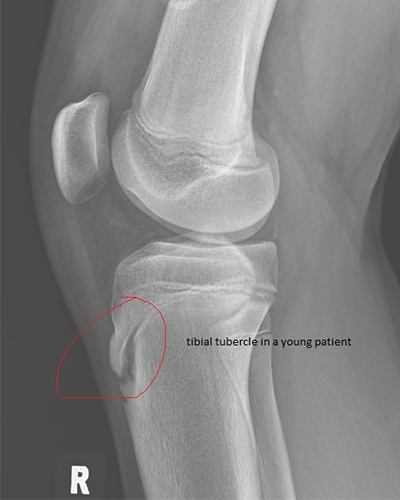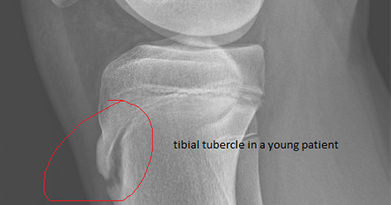
What is Osgood-Schlatter disease?
Osgood-Schlatter disease, or tibial tubercle apophysitis, is a common cause of knee pain in growing children, especially those who are active in sports. This is often due to repetitive stress or overuse, particularly in activities that involve running, jumping, or kneeling. It is caused by irritation of the area where the patellar tendon attaches to the shinbone (tibia), called the tibial tuberosity. In children, the tibial tubercle region is not fully fused down. This area is called an apophysis. Repetitive pulling on this area by the patellar tendon can cause issues. Symptoms can include pain and tenderness below the kneecap, swelling of the area, and pain during physical activity.
How to treat Osgood-Schlatter disease?
Osgood-Schlatter disease typically resolves with time and rest. The goal of treatment is to control pain and swelling. Applying ice to the area for 15-20 minutes several times a day can help reduce swelling, especially after activity. Over-the-counter pain relievers, like ibuprofen or acetaminophen, can also be effective in managing discomfort. Athletes can wear kneepads if they play a sport that requires frequent contact of their knee with other players or the playing surface. Patients can also wear a patellar tendon strap (worn right below the kneecap) to help with pain relief. Hamstring stretching and both quadriceps stretching and strengthening exercises can be a useful adjunct. If the pain does not respond to conservative measures, formal physical therapy may be warranted. As the child matures and the growth plates close, symptoms typically resolve; however, the bony prominence on the shin bone (tibial tubercle) can remain. Importantly, continued participation in activities will not lead to long-term knee damage. It is safe for children to participate in activities as tolerated.
If the tibial tubercle region does not ever fully fuse, one can have a long term issue with a tibial tubercle ossicle. This area can continue to cause pain and discomfort down the road. Through surgical means, the ossicle can be removed and pain relief is often immediate. This video demonstrates a tibial tubercle ossicle fragment excision in a tennis athlete.
Please visit a board certified orthopedic sports medicine surgeon to discuss treatment options for Osgood-Schlatter disease.







